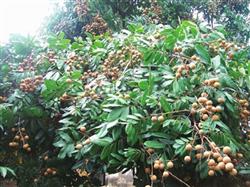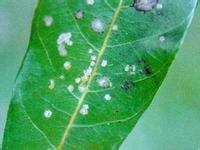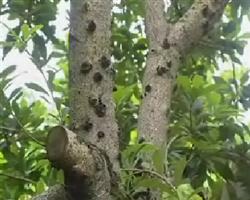Problems and Countermeasures of out-of-season Longan cultivation

Potassium chlorate was first used to promote flowers in longan in Taiwan, and the out-of-season cultivation of longan in production began in Thailand. In recent years, longan production areas in our province are also trying to use potassium chlorate to promote flower cultivation of out-of-season longan, some of which have achieved certain economic benefits, but most orchards have poor or even no effect. The author intends to give some views on the application of potassium chlorate in production for your reference. There are some problems: 1. The application effect is uneven. There are different reactions to the application of this technology in various parts of our province and Hainan Province. In some places, the effect is better, but in more places, the response effect is poor, and some have no flowers at all or very few flowers at all; even for flowering trees, the flowers on different branches are the same as the same tree due to great differences in flowering period. or after flowering in uncomfortable weather (such as low temperature, rain or high temperature) or pest control, fertilizer and water management can not keep up with a large number of flowers and fruits; although some trees have a certain yield, but the fruit size is uneven and the commodity value is poor. 2. The application technology is not mature in fact, the cultivation technology of anti-season longan with strong oxidant potassium chlorate is not mature, which needs to be discussed deeply by scientists and technicians. Therefore, at present, this technology is not suitable to be popularized in a large area. The problem of ① application method at present, when potassium chlorate is applied, it is used in soil and foliar application. From the existing situation, the effect of soil application is better than that of foliar application, which needs to be further studied. What is the most effective way to apply soil fertilizer? Is it applied to the whole root zone or locally? Deep or shallow? There is no final conclusion yet. When is the best time to apply ② in spring, summer, autumn and winter? Are there any differences in the best time for application in different regions, different years, or even different varieties and ages? It needs to be discussed in depth. ③ dosage problem from the current situation, there is a great arbitrariness in the application of potassium chlorate in production, and the application amount per plant is 0.1kg, 0.5kg or more. The amount of application should depend on the size of the tree, topography, nature, climate of the application season (especially rainfall) and other specific conditions, and systematic research is needed. The consequence of continuous application of ④ can potassium chlorate be applied continuously for a long time? What is the effect of long-term application of potassium chlorate on trees? What is the effect on soil quality and fertility? It's not clear yet. Treatment measures 1. Strengthen the study on the flower-promoting mechanism of potassium chlorate. Although there have been some reports on the flower-promoting mechanism of potassium chlorate, there are still many unclear places. According to the better effect of soil application, it is inferred that potassium chlorate promotes flowering mainly by affecting the root system. However, it is necessary to make an in-depth study on whether the reason of promoting flower is due to its strong oxidation injury and water control, or because the chlorate ion is absorbed by the root and affects the metabolic activity of the tree. 2. Strengthen the management of the sale and use of potassium chlorate. Potassium chlorate can be used as a raw material to process explosives, which is prone to explosion. Therefore, improper handling will lead to accidents. It is suggested that the relevant government departments should strengthen the management of the sale and use of the drug, dealers need the permission of relevant departments to sell potassium chlorate, and fruit growers must have the guidance of technical personnel when using it to prevent accidents. 3. Technical measures to improve the application effect of potassium chlorate in out-of-season longan cultivation ① the key technology of using potassium chlorate to promote flowers must be matched with relevant technical measures in order to achieve good results. These measures can be summarized as "three look and two prevention". Respectively introduced as follows: (1) three look: first look at the tree-the tree should be strong: plants with vigorous vegetative growth tend to have poor flowering ability, and better flower-promoting effect can be achieved after the application of potassium chlorate. On the contrary, if potassium chlorate is applied to the plants with poor growth, it will seriously affect the vegetative growth and nutrient accumulation of the tree. even if the flower promotion is successful, the poor fruit development, uneven size and poor commercial value will be caused by malnutrition. It will also affect the growth and fruit of the tree in the future. Second, look at the shoot-use after the new shoot is ripe: although some people also produce flower buds at the tender shoot stage, we think that the quality of applying flowers is better after the new shoot is ripe. Because flower bud differentiation needs a lot of nutrition, when the mother branch is not fully mature, the accumulation of storage nutrients is very little, at this time, the differentiation of flower buds are congenitally deficient, and the quality of flowers is naturally not high. Third, look at water-prevent soil flooding after application: excessive soil moisture or flooding reduces the concentration of potassium chlorate and affects the effect of promoting flowers. Therefore, do not immediately apply a large amount of water, the soil can be kept moderately moist. In the rainy season, plastic film should be covered in the root zone under the canopy after application to prevent Rain Water from diluting or washing away potassium chlorate. (2) two precautions: one is to prevent the contradiction of top fruit: during the flowering period and the growth period of young fruit after flowering, attention should be paid to prevent branches from sprouting and growing slightly, so as to avoid a large number of flowers and fruits falling from new shoots competing with flowers and young fruits for nutrition. The second is to prevent the production of thick-skinned small fruit: if the young fruit meets high temperature in summer or low temperature in winter, the fruit will form thick-skinned small fruit due to sunburn or dysplasia, making the fruit lose its commerciality. The temperature of fruit surface can be reduced by spraying water in summer and spraying foliar fertilizer and growth regulators in autumn and winter to solve this problem. Choosing the appropriate application time and strengthening the cultivation management after application of ② deviating from the normal phenological phase will cause serious environmental pressure on the growth and development of tree organs (especially flowers and fruits), resulting in stunted or abnormal development. Therefore, the biggest difficulty in commercial out-of-season longan cultivation is that the internal appearance quality and commerciality of the fruit are still maintained after the phenological period of flower and fruit growth and development is forced to change. In fact, it is almost impossible to really do this. Therefore, we believe that in order to achieve the best benefit in the production of potassium chlorate, it is best to increase the output of longan. It can also be used as a remedy in the spring to encourage unfruitful trees to blossom and bear fruit. Of course, if large-scale temperature control facilities can be built, potassium chlorate can be used at any time to assist in out-of-season longan cultivation. The high upfront investment makes it impossible for this method to be widely implemented in our country at present. However, under natural conditions, it is not impossible to cultivate out-of-season longan on a small scale where there are conditions. Due to the application of potassium chlorate to promote flowers in different seasons, the problems encountered in production will be different, so we must take corresponding measures to overcome these problems in order to achieve better results. Spring application and autumn ripening: when applied in Rain Water, the soil surface of the root zone should be covered with plastic film to prevent Rain Water from scouring or diluting potassium chlorate. The period of young fruit development is at a high temperature in summer, so we should pay attention to shading and spraying water to prevent sunburn. It is also necessary to prevent the overgrowth of new shoots, resulting in serious fruit drop. Summer and winter ripening: it is high temperature in the middle of summer when flowering, and insect activities are very few, which can easily lead to poor pollination and fertilization, so artificial pollination should be strengthened; at the same time, the growth of new shoots in summer is exuberant, which should be controlled to protect flowers and fruits; in the later stage of fruit development, when the temperature gradually drops, sunshine decreases, trees should be ventilated and transparent, and ineffective branches and leaves should be reduced; fruits should also be thinned as early as possible to ensure limited nutrition and concentrated supply of potential fruits. In the later stage of fruit growth, it is also necessary to keep warm and prevent cold, in order to prevent a large number of pre-harvest fruit drop. Generally speaking, the off-season longan cultivation of "ripening in summer and winter" is difficult, and the commercial value is not high, except in the southern area of our province, it is generally not suitable to carry out. Spring ripening in winter: flowering is in late autumn and early winter, low temperature, poor sunshine, almost no insect activity, pollination and fertilization is a big problem; the development period of young fruit is easy to fall off in winter low temperature season. You can try it in the south (such as Hainan). One month before and after construction: the management is similar to the positive longan, and has the most commercial application potential.
- Prev

Pest control of litchi and longan in autumn and winter
First, the species and control of insect pests in autumn shoot. Autumn shoots are the fruiting branches of next year, if eaten by pests, it will seriously affect the formation of flower buds next year. Autumn shoot pests are mainly a variety of leaf-eating inchworms and leaf rollers. Among them, gall mites (felt disease) and longan horncheek wood lice are the most harmful from September to November every year.
- Next

Several common diseases and insect pests affecting the tree potential of red bayberry
Diseases and insect pests such as cancer, brown spot, leaf roll moth and pine caterpillar have great influence on the tree potential and yield of red bayberry. Prevention should be given priority to in production and comprehensive control should be carried out. In addition to taking measures such as increasing the application of organic fertilizer and potash fertilizer and clearing the garden in winter, the growing season should aim at the occurrence law of diseases and insect pests and take effective measures in time.
Related
- Moge, come on! The staff of the peasant association in the producing area of cantaloupe were frightened when the crowd gathered.
- Causes and Solutions of low Fruit setting rate of Apple
- Symptoms and control measures of passion fruit virus disease
- Fruit growing lesson: how do apple orchards keep high yields?
- Can you build orchards in the mountains? What are the pros and cons?
- How to manage the coloring period of Crisson grape?
- This paper introduces the processing technology of two kinds of fig products.
- How much is a month for retired teachers in rural areas by 2020?
- How can strawberry planting increase sugar content? We should pay attention to management in many aspects.
- What are the cultivation techniques on how to improve the yield of golden fruit?

